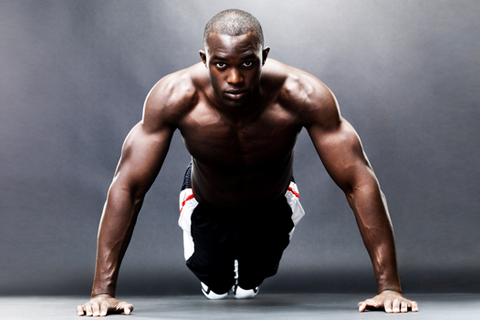How To Get Strong Without Using Heavy Loads
by Matt Hodges
02 February 2012
Traditionally athletes have got stronger by lifting heavy weights, or in other words incorporating exercises with a high external load.
Examples include:
The back squat, where a heavy loaded barbell is placed across the upper back.
The military press, where a heavy barbell is pressed from the shoulders overhead.
The deadlift, where a heavy barbell is lifted off the floor.
In order to improve maximal strength it is necessary to improve the maximal level of muscle force. Maximal muscle force is attained by recruiting the largest motor units known as fast-fatigable (FF) motor units, capable of producing force for no more than 10 seconds.
Therefore if a training set lasts longer than 10 seconds its fair to say you’re no longer training for maximal strength. In sports such as athletics and rugby developing maximal strength is essential in order to develop the fast, powerful movements involved in the sport.
Continuous maximal lifting in the squat, press and deadlift has traditionally been accepted as essential in order for athletes to develop strength in their chosen sport. However such an approach places huge strain on the central nervous system and the joints, thus affecting recovery, and potentially affecting on the field performance. More importantly, such exercises place large amounts of compressive loading upon the spine which can take days to recover from.
The Catch
The catch here is that if you want to make big gains in the training room then it’s essential to train frequently. Heavy load training takes too long to recover from to sustain any type of frequent training program. This is where high – tension training comes into play. High-tension exercises are unique in that they recruit the FF muscles in the same way a heavy load barbell exercise does, while not necessarily using an external load of any type!
This can be a ‘win-win’ situation in your training program. You might choose to perform a heavy barbell deadlift on a Monday and then couple this with two further high-tension workouts to target the posterior chain (glutes, hamstrings and erector muscles). For example the bodyweight glute-ham raise will induce high levels of tension without the associated compressive loading of a heavy barbell deadlift.
This format can be applied to any of your main strength exercises. The barbell back squat can be combined with hip belt squats. The military press can be combined with handstand push-ups. The key here is to ensure that your developing a high level of tension with the bodyweight exercises. In an exercise such as the glute-ham raise you might focus on the top position of the movement and try to stay there for a few partial reps, lasting a total of no more than 10 seconds, thus ensuring maximal tension in the muscles. Aim for 25 partial reps in total, taking as much rest as needed in between sets.
Get strong without using heavy loads. My Example Program
- Monday – Heavy barbell deadlift – 3×3. Power clean 3×5.
- Tuesday – Bodyweight push-ups and pull ups – focus on high tension.
- Wednesday – Glute-ham raise and hip belt squats (high-tension).
- Thursday – Bodyweight hand stand push up and pull ups (high-tension).
- Friday – Recovery – Focus on mobility and soft-tissue health.
- Saturday – Sprinting. 10 hill sprints – 10 secs per set.
- Sunday – OFF
There are of course any number of programs that can be put together using the high-tension principal, depending on which movements you’re focusing on in your program. The above program details the main exercises in the program, additional exercises may be added to focus on specific weaknesses where necessary. For example the push-ups and pull ups may be followed be a few sets of a horizontal row on a cable machine.
Conclusion
Heavy load exercises are an essential part of a program to increase maximal strength, however a combination of heavy loading and high-tension training will not only help develop maximal strength but allow for improvements in recovery and thus greater training frequency. This will lead to faster gains whilst giving your bones and joints a welcome break!
This article was written by Matt Hodges, you can see all his articles here.






